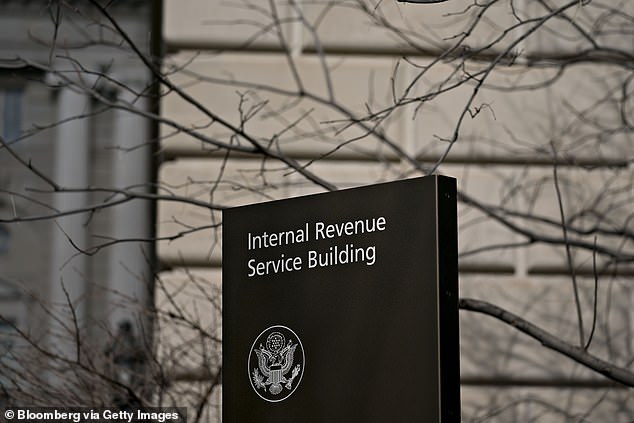IRS penalty for underpaying estimated taxes jumps to 8% of the shortfall from 3% two years ago – with freelancers and the self-employed most at risk
- Penalties for underpayment of estimated taxes have increased as a result of the Fed's interest rate hikes
- The fine was 8% on October 1, compared to the lowest possible 3% in early 2021
- The fine mainly applies to self-employed people who pay taxes every quarter
The IRS penalty for underpayment of estimated taxes has increased sharply this year, with self-employed individuals and freelancers most at risk of being affected.
The penalty, calculated quarterly based on the Federal Reserve's benchmark interest rate, was 8 percent on Oct. 1, up from just 3 percent in early 2021, when the Fed rate was near zero.
The penalty rate applies to shortfalls in estimated taxes, which self-employed individuals pay to the IRS quarterly based on their income for the period.
Employees who have income taxes deducted from their wages generally do not have to pay estimated taxes and are unlikely to be affected by the new penalty.
But for the self-employed, the new higher fine is yet another consequence of the Fed's aggressive interest rate increases, which the central bank has used to combat inflation.

The IRS penalty for underpayment of estimated taxes has risen sharply this year, with self-employed people and freelancers most at risk of being affected (stock image)
The IRS calculates the underpayment penalty by taking the Fed's benchmark rate for the quarter and adding 3 percent.
According to the Wall Street Journalthe IRS has imposed more than $1.8 billion in penalties for underpaying estimated taxes on nearly 12.2 million individual returns in fiscal year 2022.
The IRS expects workers to pay taxes as they go, either through payroll deductions for employees or quarterly payments for the self-employed.
These rules apply to the period in question. This means that if you pay too little tax during a quarter, you can still be penalized even if you pay more than you owe for the entire year.
According to the IRS, you can avoid an underpayment penalty if your filed tax return shows you owe less than $1,000.

The underpayment penalty, which is calculated quarterly based on the Federal Reserve's benchmark interest rate, was 8 percent on Oct. 1, up from just 3 percent at the start of 2021
In addition, anyone who pays at least 90 percent of what they owe for the tax year in question, or 100 percent of what they owe for the previous year, will receive a safe harbor from the penalties.
Not every freelancer has to pay estimated taxes.
In general, if you pay federal withholding through an employer and have a small freelance “side hustle,” you won't have to pay estimated taxes every quarter.
The deadline for paying estimated taxes for the last quarter of 2023 is January 15. However, if you file your 2023 tax return by January 31 and pay all the taxes you owe for the year, that deadline does not apply.
Estimated taxes can be paid through the IRS website at IRS.gov.
